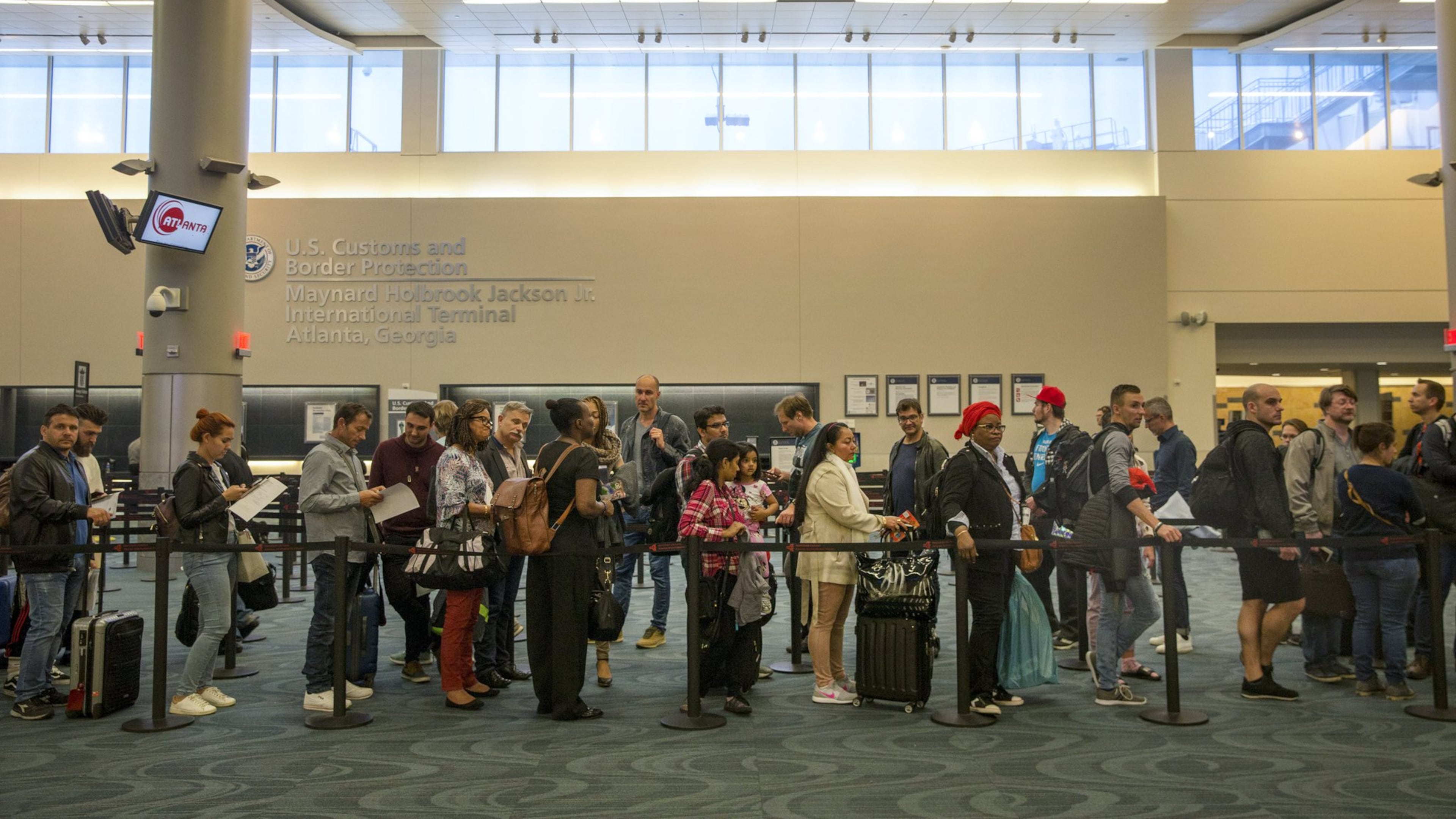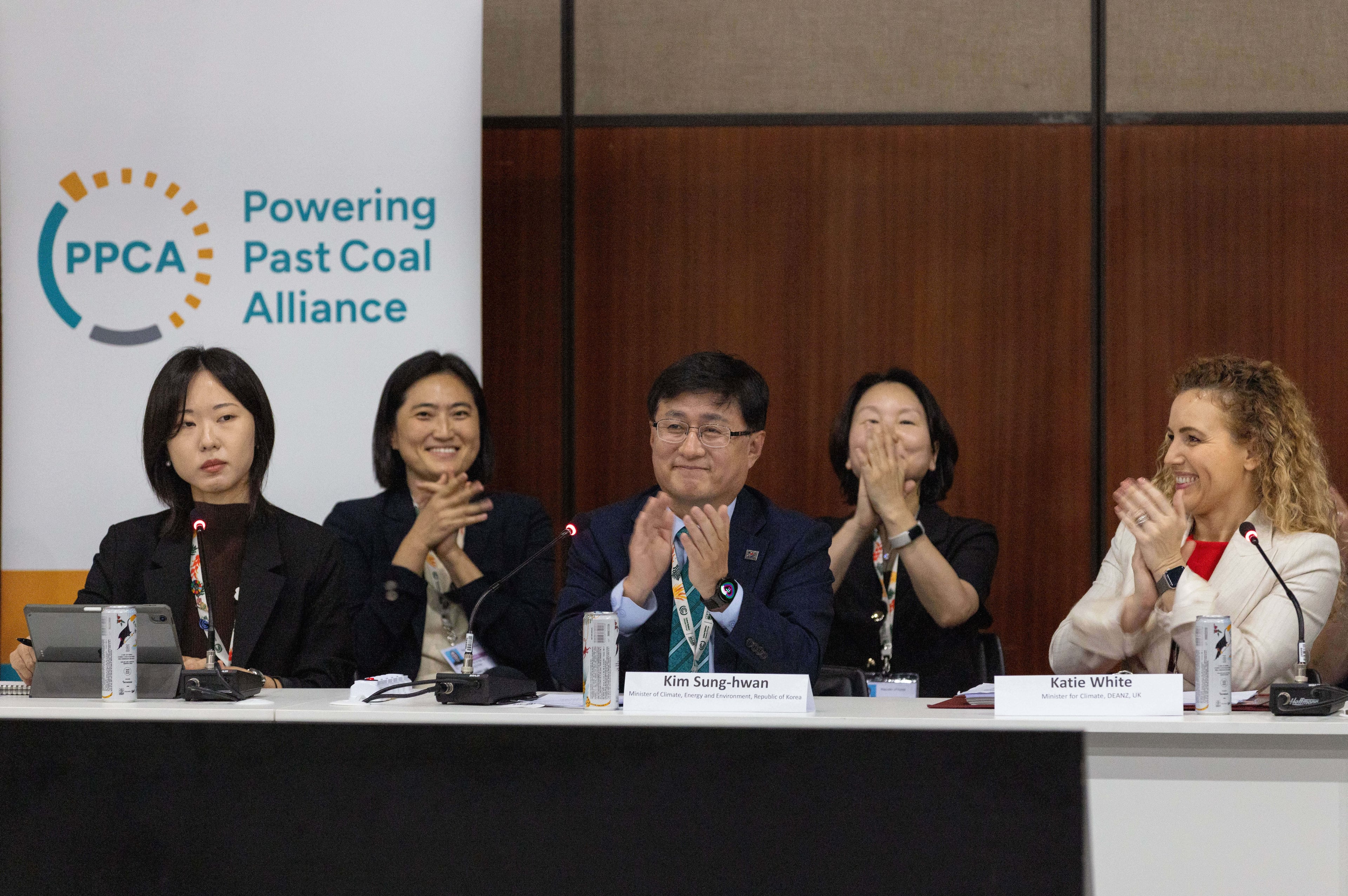Long Customs waits at Hartsfield-Jackson vex international travelers

Some travelers arriving at Atlanta’s Hartsfield-Jackson International Airport are facing long lines and hours-long waits to pass through Customs. One reason: Atlanta agents sent to the southern border to help with the surge of migrants there.
Hartsfield-Jackson’s general manager is so concerned that he’s reached out to members of Congress to help.
“There’s a deployment to the southern border and that has reduced our staffing levels here at Hartsfield-Jackson,” John Selden told The Atlanta Journal-Constitution. “And we are advocating through our Congressional delegation to hopefully get more staff here to balance it out throughout the country.”
Customs and Border Protection has been scrambling to handle record-high numbers of migrants showing up at the Southwest border even as it wrestles with its own staffing shortfall. At the beginning of this month, then-Secretary of Homeland Security Kirstjen Nielsen ordered a redeployment of “hundreds of CBP personnel to the border to respond to this emergency,” redirecting 750 officers from ports of entry. She told CBP to increase the “temporary reassignment of personnel and resources from across the agency to address the influx of migrants.”
The agency said this week it will “send CBP officers from airports and northern border locations on temporary assignments throughout the Southwest border to support the U.S. Border Patrol during the current border security and humanitarian crisis.”
The delays at Hartsfield-Jackson, the world’s busiest airport, show how the border crisis is having repercussions far beyond the Southwest.

Carey Davis, Atlanta port director for Customs and Border Protection, declined to discuss specific staffing numbers but said security remains paramount.
“CBP’s priority is protecting the United States, and we do that in a way that sometimes causes people to have to wait in line for a little bit,” Davis said. “Wait times are not my principal priority. The security of this country is.”
He said some staff from Hartsfield-Jackson were sent to the border earlier this year and have returned. "We send people to help out all over the country whenever there are issues that require it, and if and when they call, we will certainly support those efforts," he said.
Davis said one key reason for the long waits is that international traffic in Atlanta is increasing. He added that wait times at New York's John F. Kennedy International Airport are often longer than Atlanta's. CBP has also shifted away from using automated passport control kiosks for most passengers and is now using facial recognition technology, which can confuse some passengers.
International passenger traffic comes in peaks and valleys at the Atlanta airport. Some travelers, arriving at Customs when lines are short, might wait for only a few minutes. But many arrive in a wave of flights from overseas in the late afternoon, when lines can get much longer.
Traveler Hadassa Romeus was returning from a vacation in Paris a week ago when she arrived in Atlanta to lines at Customs so long she was worried she would miss her connecting flight.
“It was just really kind of a mess,” Romeus said. “They should be able to expect a certain amount of volume and be able to staff enough, especially for people that have to make their [connecting] flights.”
Romeus said she had a two-hour layover and waited for about an hour and a half to clear Customs, getting to her gate about 5 to 10 minutes before boarding.
“It’s really affecting the real lives of people,” Romeus said.
At the Customs checkpoints for international Concourses E and F, wait times recently exceeded two hours a few times a week. Lines are often longer for non-U.S. citizens — reaching a wait time as high as 3 hours and 10 minutes for a period on April 2, for example. The wait for some U.S. citizens reached 2 hours and 47 minutes on April 1, 3 hours and 6 minutes on April 2, and 2 hours and 24 minutes on April 4, according to airport wait time results on CBP's website.
Those wait times appears to be worse than they were previously. In the same early April period of 2018, there was a one-hour period when the maximum wait time exceeded two hours for non-U.S. citizens, but the wait for non-U.S. citizens did not quite hit the two-hour mark.
Selden said the Customs wait time “seems to be fairly long here, and we’re hopeful that Customs and Border Protection… re-balances the deployment of staff not only to the southern border but throughout the country to equalize the wait times evenly throughout the international airports.”
U.S. Sen. Johnny Isakson, R-Georgia, has been aware that long wait times have been “an issue for some time, even before the border deployments,” according to a spokeswoman, who added that his office has been working with the Atlanta airport to address staffing shortages.
“Senator Isakson has repeatedly brought up the need for additional personnel at Hartsfield,” according to Isakson spokeswoman Amanda Maddox.
Earlier this month, U.S. Sen. Gary Peters, D-Mich., and John Cornyn, R-Texas, introduced legislation to address personnel shortages at ports of entry by requiring Customs and Border Protection to hire at least 600 officers a year until its staffing needs are met.
Customs and Border Protection has a “persistent staffing shortage of more than 4,000 employees” according to National Treasury Employees Union president Tony Reardon in testimony to the Senate Homeland Security and Governmental Affairs committee last year.
The U.S. Travel Association, an industry group, said long delays at Customs can discourage international travel to the United States, and has urged lawmakers to adequately fund Customs and Border Protection to streamline the customs and entry process.
The group said it found 43 percent of overseas visitors indicated they would recommend against traveling to the United States because of Customs entry hassles.
U.S. Travel executive vice president of public affairs and policy Tori Barnes in a reaction to CBP pulling staff to the southern border issued a statement saying: “In pursuing its objectives on the southern border, we urge the administration to keep other entry points appropriately staffed and effectively secured.”
Forecast for international visitor counts to the U.S.
2019: 83.9 million
2020: 86.1 million
2021: 89 million
2022: 92.1 million
2023: 95.5 millin
Source: National Travel and Tourism Office, U.S. Department of Commerce



